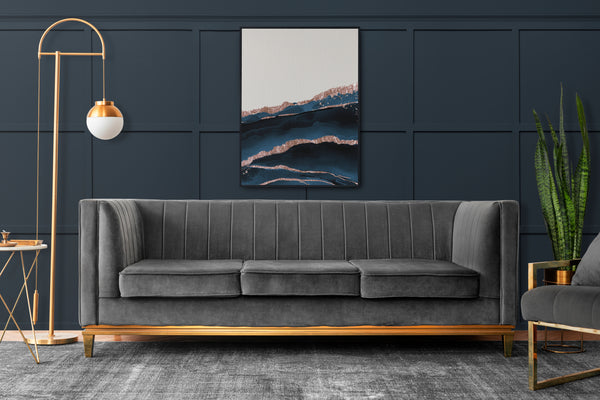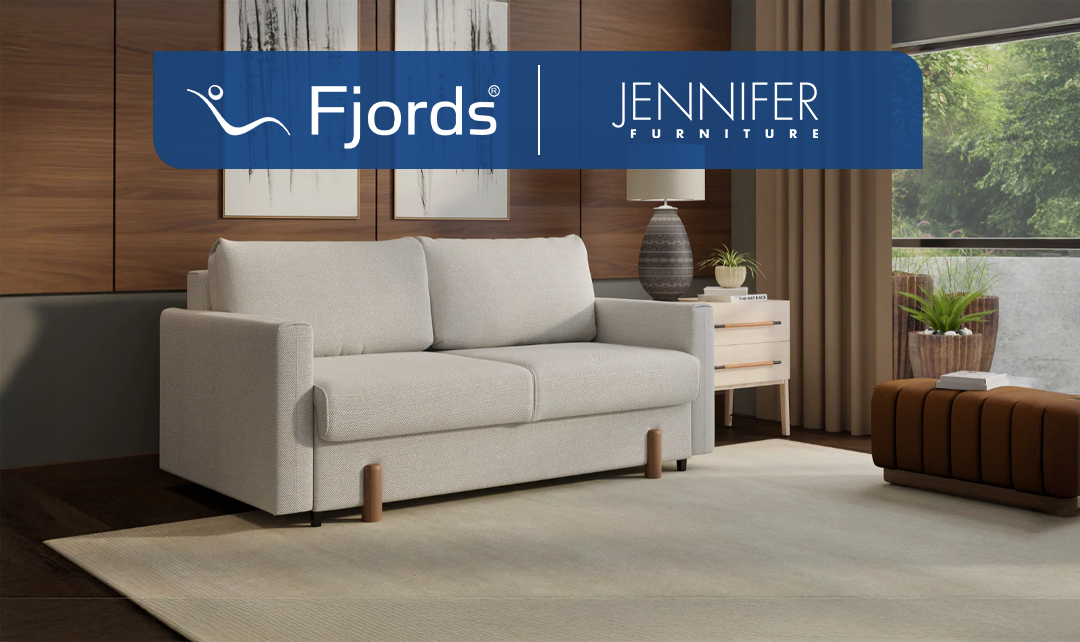Key Measurement For Planning Your Outdoor Furniture Layout

TABLE OF CONTENT
- Perfect Outdoor Furniture Layout: The Key Measurement Guide
- Measure Your Outdoor Space
- Plan Your Furniture Layout
- Measure Furniture Before Buying
- Understand The Human Scale
- Conclusion
"What is the good of your stars and trees, your sunrise and the wind, if they do not enter into our daily lives?" –E.M. Forster
In this busy world, looking after ourselves is crucial. But here's the real question: How to do it? The solution to this is outdoor dining. Isn’t it true that there is so much to do that you hardly get time to connect with nature and recharge yourself? Imagine having an outdoor space where you can unwind and enjoy yourself, without needing to set aside extra time from your schedule.
Pause briefly and reflect on it. Hasn't it ever struck you that most of the time, no matter where you are, be it in the office or elsewhere, you are confined indoors? Having a little space outside where you can breathe in the fresh air, watch the mesmerizing sunrise and sunset, and even do some stargazing sounds like a fantastic idea, doesn't it? By combining the finest aspects of two worlds - dining and nature, this synergy works wonders for our overall well-being.
To create a beautiful, comfortable, and functional outdoor space, good planning is necessary. It all starts with determining the measurements – the foundation for a welcoming and well-balanced outdoor furniture arrangement. With the right layout, your outdoor area can become more delightful filled with comfort and charm.
But to make that vision come true, you'll need to become a measurement and layout pro. In this blog, we will help you measure your outdoor space and plan the perfect arrangement for your furniture. These steps will let you create a wonderful outdoor space and enjoy your time outside.
Unlocking The Perfect Outdoor Furniture Layout: The Key Measurement Guide
Measure Your Outdoor Space

Before you buy the furniture for your outdoor dining space, grab your measuring tape and get to work. Measuring your outdoor space accurately is the foundation of creating a functional and aesthetically pleasing furniture arrangement. To do this, you have to follow two simple steps.
Step 1: Determine the Area:
Start by measuring all of the outdoor space you want to set up. Note any unique features like garden beds, trees, or pathways that might affect your layout. For example, your yard is 25 feet wide and 36 feet long with a lovely garden bed on one side.
Step 2: Account for Clearance:
To ensure a comfortable movement, leaving at least 2 feet of space around furniture such as chairs and tables is a must. For example, If you have limited space and your dining table is close to a wall, it is necessary to leave at least 2 feet of space, so you can easily move around and sit comfortably.
Plan Your Furniture Layout

After you have all the measurements, it's time to create the most functional, comfortable, and beautiful outdoor space. These few steps will help you to do so.
Step 1: Identify the Focal Point:
Determine the focal point of your outdoor area, such as a breathtaking view, a waterbody, or a beautiful garden. Arrange your furniture to complement and draw attention to this central feature. Example: With a serene fountain as the focal point, you must arrange your seating to face it, creating a peaceful ambiance.
Step 2: Consider the Function:
Consider how you want to use your outdoor space. Will it be primarily for dining, relaxing, or entertaining? Adapt your furniture arrangement individually to the intended use. Example: If you enjoy hosting dinner parties, set up a cozy dining area with ample seating and a side buffet for additional dishes and drinks.
Step 3: Create Zones:
Divide your outdoor space into functional zones, like a lounging area, dining area, and relaxation corner, if space allows. Each zone should have a clear purpose and different furniture pieces. For example, designate a corner for a hammock or a reading nook, while on the opposite side, there can be a dining table and chairs.
Measure Furniture Before Buying

After you've measured the space and determined the focal point, function, and zones, it's time to buy the furniture for your outdoor space.
Picture this: You've found the perfect sofa that looks stunning and you've purchased it. But it turns out to be too big for your space leaving you disappointed and frustrated. A common mistake many furniture buyers make is overlooking the importance of comparing furniture size to the space available. Now let's see why you should do it.
1. To Avoid a Cramped and Cluttered Space
One of the most significant reasons to compare furniture size with your available space is to prevent a cramped and cluttered space. Oversized furniture can dominate a small area, making it feel suffocating and disorganized.
Note down the dimensions of the furniture you want to buy and where you'll place them. Now consider the previously mentioned points to leave enough space on each side. Take chalk or marker tape and mark the exact measurement. Then compare how much space is left for movement and other furniture.
For example, The space is 15 feet wide and 20 feet long. The dining table you plan to buy is 8 feet long and 4 feet wide and can seat 8 people. Start by measuring the area where you want to place the dining table and chairs. First, mark the area for the dining table, considering its dimensions (8'x4').
Then, the chairs around the table. Now, take a look at how much space is left around. Arrange the rest of the furniture accordingly. This way, you'll create a well-organized, functional, comfortable, and enjoyable space.
2. To Prevent Costly Mistakes
Buying furniture is an investment and making the wrong purchase can result in costly mistakes. When a furniture piece doesn't fit where you want it, returning or exchanging it can be frustrating and expensive. To avoid such problems, measure your space carefully and consider all possible points before purchasing.
3. To Optimizing Functionality
The size of your furniture can greatly impact its functionality. For instance, a dining table that is too big for your space might make it difficult for you to move around comfortably. While a table that's too small may not accommodate everyone.
4. To Create a Harmonious Layout
Creating a harmonious layout in your space is essential for its aesthetic appeal. A well-proportioned space allows for proper traffic flow and facilitates conversation and movement. So, before choosing a piece of furniture, imagine how it will fit with the existing elements in the area.
5. For Personalization and Comfort
Getting the perfect-sized furniture is key to making your space feel customized for you. It doesn't matter if you want a snug little corner or a big, open dining area – taking measurements of your furniture will make a difference. It ensures you set up a comfortable environment just how you like it.
Understand The Human Scale

The human scale refers to the proportions and dimensions that suit the average human body and promote a comfortable experience within a space. It considers factors like seat height, depth, and armrest height, all of which significantly impact how people interact with their surroundings.
By respecting the human scale in outdoor furniture layouts, you can create a comfortable and intimate environment for those using the space. Let's explore this concept for a deeper understanding.
The Optimal Seat Height
Always consider the seat height of your outdoor chairs and sofas. In general, a seat height of around 16 to 18 inches is considered ideal. At this height, most people can comfortably place their feet on the ground while adopting a relaxed posture. If the seat height is too low or too high, it will make it difficult for you to sit leaving you feeling uncomfortable.
Balancing Seat Depth and Backrest Angle
Equally important for the comfort of outdoor furniture is the right seat depth and backrest inclination. Generally, a seat depth of 20 to 22 inches is recommended because it allows you to sit without feeling constricted or unsupported. The backrest angle must be around 100 to 110 degrees, to ensure a relaxed posture and minimizes strain on the lower back.
Armrest Height
When it comes to armrest height, the key is to provide adequate support without obstructing natural movements. The armrests' height must be around 7 to 9 inches above the seat level. It helps strike a perfect balance, offering a convenient place to rest arms and providing stability when sitting down or standing up.
Conclusion
In conclusion, planning your outdoor furniture layout based on important measurements is essential to create a harmonious, functional, and pleasant space. Combining the beauty of nature with the comfort of outdoor dining can enhance our well-being in this busy world.
By carefully measuring your outdoor space and considering the open spaces, you can lay a solid foundation for an inviting design. Identifying the focal point and considering the intended function of your space allows for a personalized and streamlined design. Additionally, comparing furniture size to available space ensures furniture fits well and promotes comfort, eliminating costly mistakes and improving overall aesthetics.
Understanding human scale and considering factors such as seat height, depth, and armrest height help create a comfortable and welcoming environment for everyone. By following this measuring guide, you can realize the potential of your outdoor space and connect with nature, relax, and recharge your batteries while enjoying the benefits of a carefully planned patio furniture arrangement.





